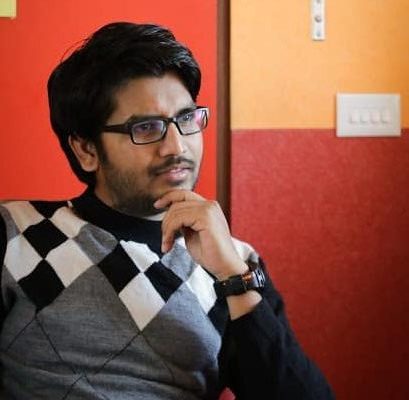“Ardambarda astrology kaltu, Aptamitra Avinash range-ige build up kodtarappa!” (“Barely knows any astrology, but portrays himself as Avinash from Aptamitra movie”) says Sudarshan in one of his gigs, warning the audience to stay away from the astrologer uncle at family events.
Bengaluru has been a stand-up comedy hub for about a decade now, with artists from various backgrounds performing in English and Hindi. This is not surprising as the city is home to people from across India. But modern comedy in Kannada was not popular here till a few years back.
Traditionally, in local art-forms like Yakshagana, ‘Vidushakas’ or comedians have used witty dialogues to convey their views on contemporary issues. And then, comedians like Narasimha Raju, Balakrishna, Dwarakish, Mukhyamantri Chandru and Jaggesh have been the face of comedy on screen for decades. There are also artists like Pranesh, Sudha Baraguru and Richard Louis who regularly do comedy shows on stage, but focus more on literature and language rather than contemporary issues.
Hence a collective effort was needed to build an audience for modern Kannada stand-up comedy. That’s how Kannadigas Anup Maiya, Sudarshan Rangaprasad, Karthik Pattar, Pavan Venugopal, Seema Rao and Hampa Kumar Angadi, all working in the corporate sector, came together in 2015-16 to launch “Lolbagh”, the first Kannada stand-up comedy group in the city. They perform for Bengaluru youth with simple themes based on family events, corporate life, college, traffic etc., that the youngsters can relate to.
Lolbagh has since conducted over 100 shows in various venues within the city and all over Karnataka. Lolbagh member Sudarshan Rangaprasad, who has a theatre background, says, “We’ve got amazing responses wherever we’ve gone. In fact, we got a full house on our first show.” Lolbagh had successfully held their first show in Rangasthala along MG Road, on December 25th, 2016; they were validated with a standing ovation.
Pavan Venugopal, a seasoned comedian now, talks about the lack of interest among today’s youth when it comes to art forms in Kannada, including stand-up comedy and movies. Sudarshan adds, “We’ve got fresh, native and relatable content, but there’s a lack of opportunities. Ninety percent of our effort goes into finding an organiser.” He says that regional organisers are mostly interested in Hindi or English sets since these are more in demand.
“To establish ourselves in large scale, we need a push and we aren’t getting it. We’ve mostly searched for chances, rather than having opportunities offered to us,” says Sudarshan. The group had got a slot in the Bengaluru Comedy Festival 2018 after three years and a lot of effort. The 10-day-long Bengaluru Comedy Festival, held every November, features mostly Hindi and English lineups from popular comedians across the country.
Lolbagh’s success has now opened the stage up for Kannada stand-up comedy – other small groups like ‘Your quote Kannada’ and veteran TV comedians like Sunetra Pandit have started their own gigs. Digital platforms like Voot have come up with shows like “Comediga” in which comedians from Lolbagh, along with new faces like Vinayak Kulkarni and Shashank Illur, perform 15-minute comedy sets.
With so much content on the web today, it is no surprise that Kannada youth demand fresh and relatable content from stand-up comedians. However, elders still prefer the largely-stereotypical comedy in movies and on TV.

Karthik Pattar of Lolbagh says a “cool-quotient” is needed among the Kannada audience
Lolbagh artists say that despite a growth in viewership and interest, the audience lack an understanding of how to take jokes lightly.
Sudarshan mentions the hate messages he got for mimicking a Kannada movie star in one of his comedy sets. He says, “Our people are not used to it yet. We aren’t that established either. So we have to get better shows on better stages. It all takes time and we are not giving this up.”
The market for stand-up in Kannada hasn’t grown enough to produce full-time comedians. Karthik Pattar, who brings North Karnataka style of language into his stand-up act, mentions the need for a “cool-quotient” among the Kannada audience to take jokes lightly and be more open to content, like the local audience in other languages such as Hindi, Tamil and Telugu. This cool-quotient has to develop among the youth, to make comedy in Kannada relevant and contemporary, he says.
Giving an open mic to a comedian to express his views has always contributed to the evolution of art and language of a region. One hopes that humour will take Kannada audience in the city back to Kannada language and arts.